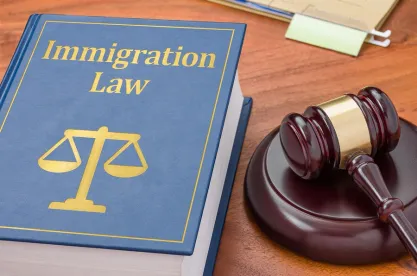As the nation looks ahead to the Presidential election, it may be hard to find any commonality between leading candidates’ political platforms and policy statements. However, with respect to immigration, it appears that all of the candidates will keep immigration enforcement as a central feature of their new administration, if elected.
Immigration compliance is largely enforced through auditing employers and fining or penalizing those who hire unauthorized workers or who do not adequately document that their workforce is legal. Many employers believe that they are immune to immigration trouble, especially if they do not typically hire foreign workers. Unfortunately, that is not true – an employer with no foreign national employees can just as easily be liable for large fines and penalties due to paperwork errors and omissions.
All U.S. employers are required to complete and retain documentation that confirms an employee’s identity and eligibility to work legally in the United States at the time of hire, using Form I-9 (Employment Eligibility Verification form). This often overlooked, and somewhat innocuous, government form can be a headache, not-to-mention a basis for substantial fines for employers with a remote workforce.
Form I-9 requires the employer or someone designated by the employer to review any new hire’s original documents as part of the Form I-9 completion. In other words, an employer (or employer designee) must physically touch the documents and certify that the documents reasonably appear to be genuine and that they relate to the new hire who is presenting them. Reviewing photocopies of documents, faxed documents, or documents via a web-cam does not comply with the law. The Form I-9 instructions state that the person who examines the documents must be the same person who signs Form I-9 Section 2 and that, “[t]he examiner of the documents and the employee must both be physically present during the examination of the employee’s documents.” Form I-9 at Section 2 requires the reviewer to sign, under penalty of perjury, that the documents were examined and appear to be genuine and that they relate to the employee who presented them.
Employers who hire peripatetic, home-based, or telecommuting employees often never meet their new hires on a face-to-face basis – and therein resides one major source of potential liability. Employers with a remote workforce often fail to perform an inspection of original documents and therefore cannot truthfully sign the employer certification in Form I-9’s Section 2. Failure to comply with this legal requirement subjects employers to fines and penalties ranging from $110 to $1,110 per form (per employee).
This remote workforce/I-9 compliance dilemma was the basis for a recent investigation of a large Minnesota-based staffing company that resulted in more than $227,000 in civil fines. In United States v. Employer Solutions Staffing Group II, LLC, 11 OCAHO no. 1242 (2015), U.S. Immigration and Customs Enforcement (ICE) investigated a company that typically employs between 6,000 – 8,000 temporary workers at locations throughout the United States. To handle such a large and remote workforce, the staffing company had staff member or other designated persons at client sites review the new hire’s original documents, make photocopies of the documents, and forward the photocopies of the identity documents to the staffing company’s Human Resources Department. A member of the staffing company’s Human Resources Department in Minnesota then completed Form I-9 and signed Section 2 based on a review of the photocopied documents.
ICE contended that in at least 242 hires, primarily arising from a staffing agreement with a client in Texas, the staffing company person who signed Form I-9 in Section 2 was not the same person who reviewed the original documents at the client site, and therefore it was “simply impossible … for a payroll administrator in Edina, Minnesota to determine whether a document reasonably appears to relate to an individual when the administrator never saw the individual and the individual only presented original documents to a different person more than a thousand miles away in El Paso, Texas.”
Although ICE conceded that none of these hired employees was working unlawfully, ICE nevertheless decided that the staffing company created false attestations in Section 2, which represented a serious violation that “subverts the purpose of the employment verification requirements.”
In light of this decision and with an eye to continued aggressive compliance enforcement, employers should closely examine on-boarding processes, especially when hiring remotely located employees. An employer can take pro-active steps to comply with the original document inspection requirement, including but not limited to:
-
Using a notary public or network of notaries public, in locations where remote employees are usually hired, to review original documents and complete Section 2 on the employer’s behalf;
-
Consolidate remote hires to specific times and regions in which the employer can be present to review original documents and complete Section 2, such as job fairs, regional trainings, or quarterly meetings;
-
Include an I-9 paperwork assistance clause within staffing or other placement contracts that would require the end-client to provide an administrator or other representative to assist the employer with reviewing original documents and completing Form I-9’s Section 2; or
-
Hiring an I-9 services company that will send a representative to meet with a remote-based new hire employee to complete the original document review and complete Section 2 on the employer’s behalf.
Please note that if an authorized representative completes Form I-9 on the employer’s behalf, the employer is still liable for any violations (mistakes) made on the form or made during the verification process. Therefore, it is important to select a representative who understands the I-9 process and can be contacted in the event that an I-9 form correction is needed.





 />i
/>i

